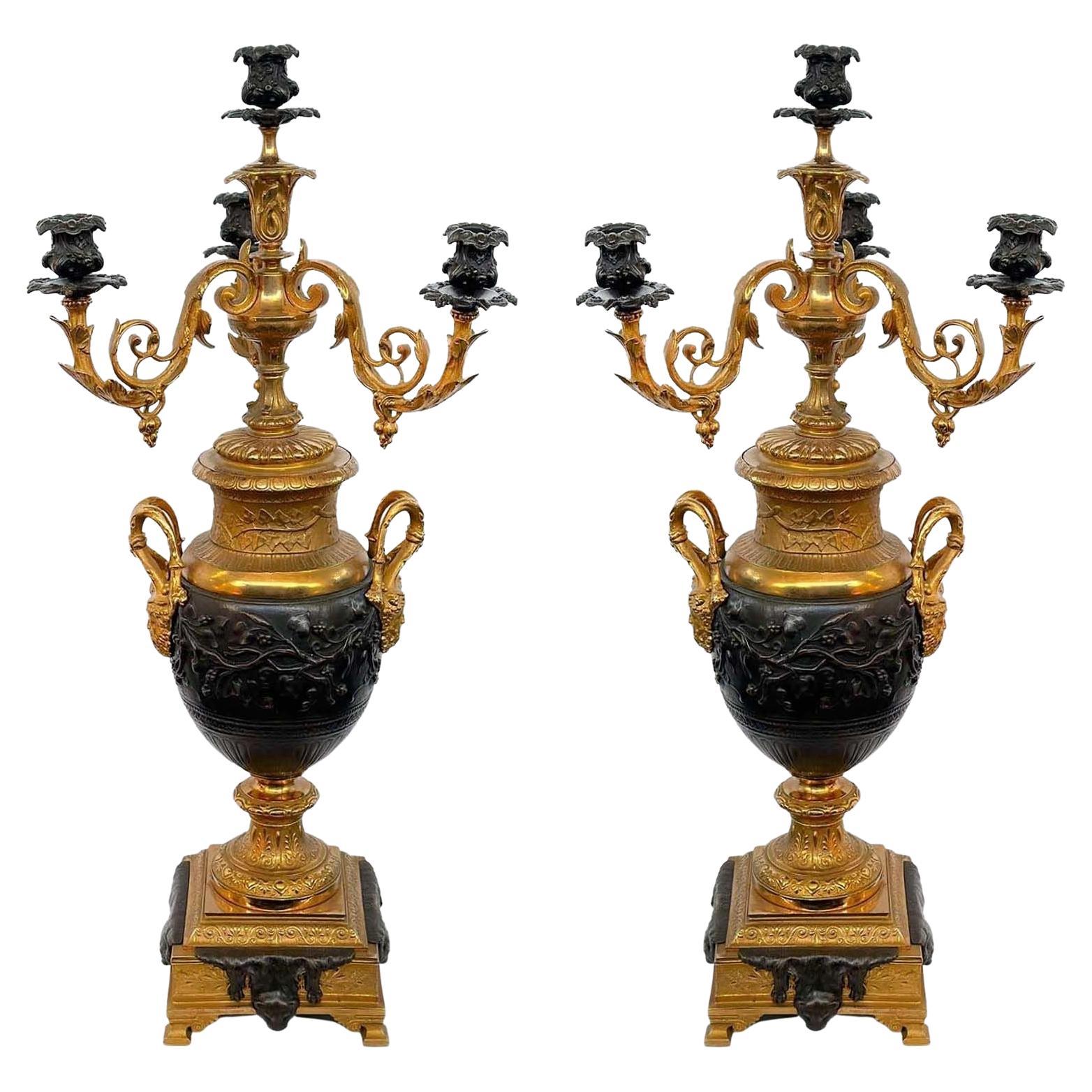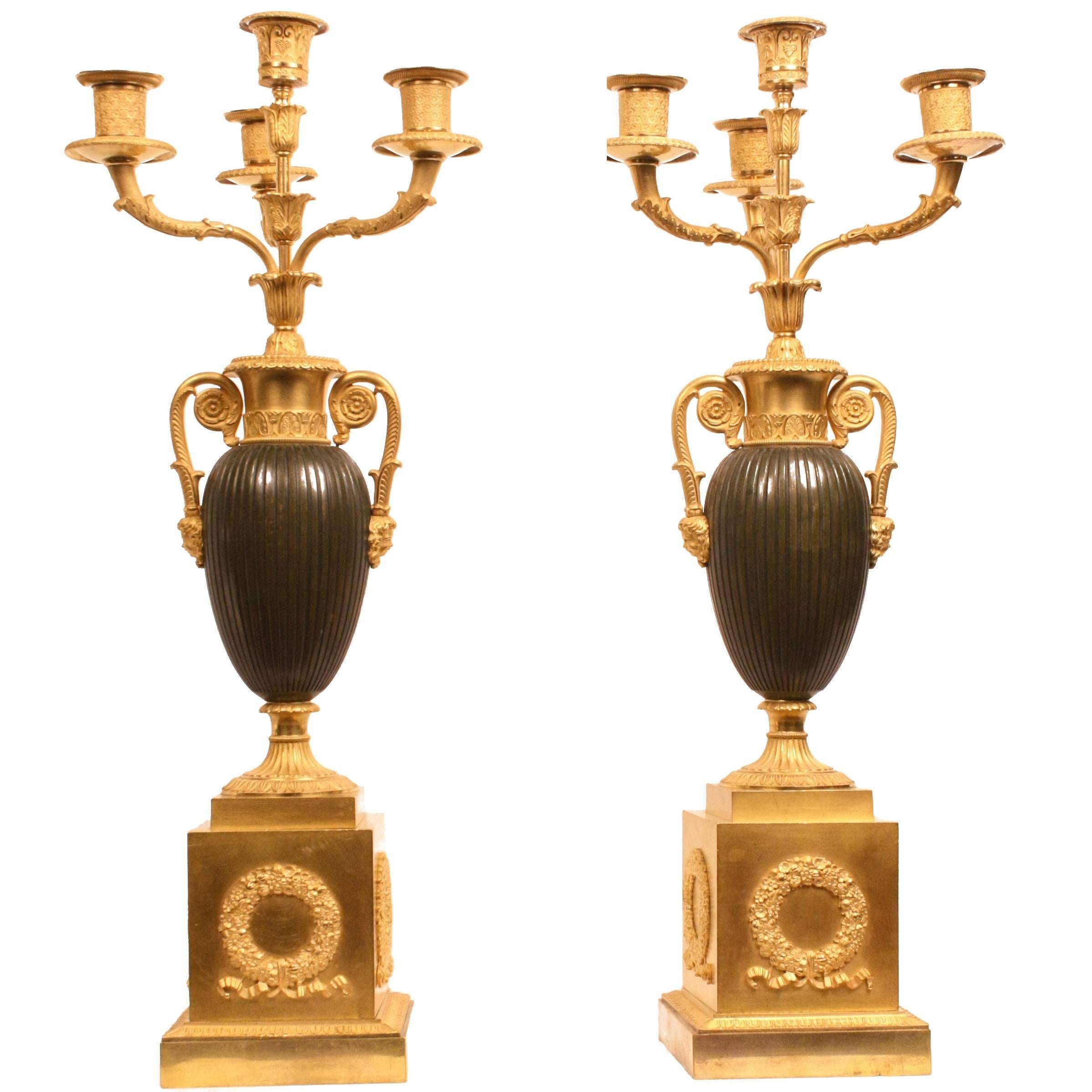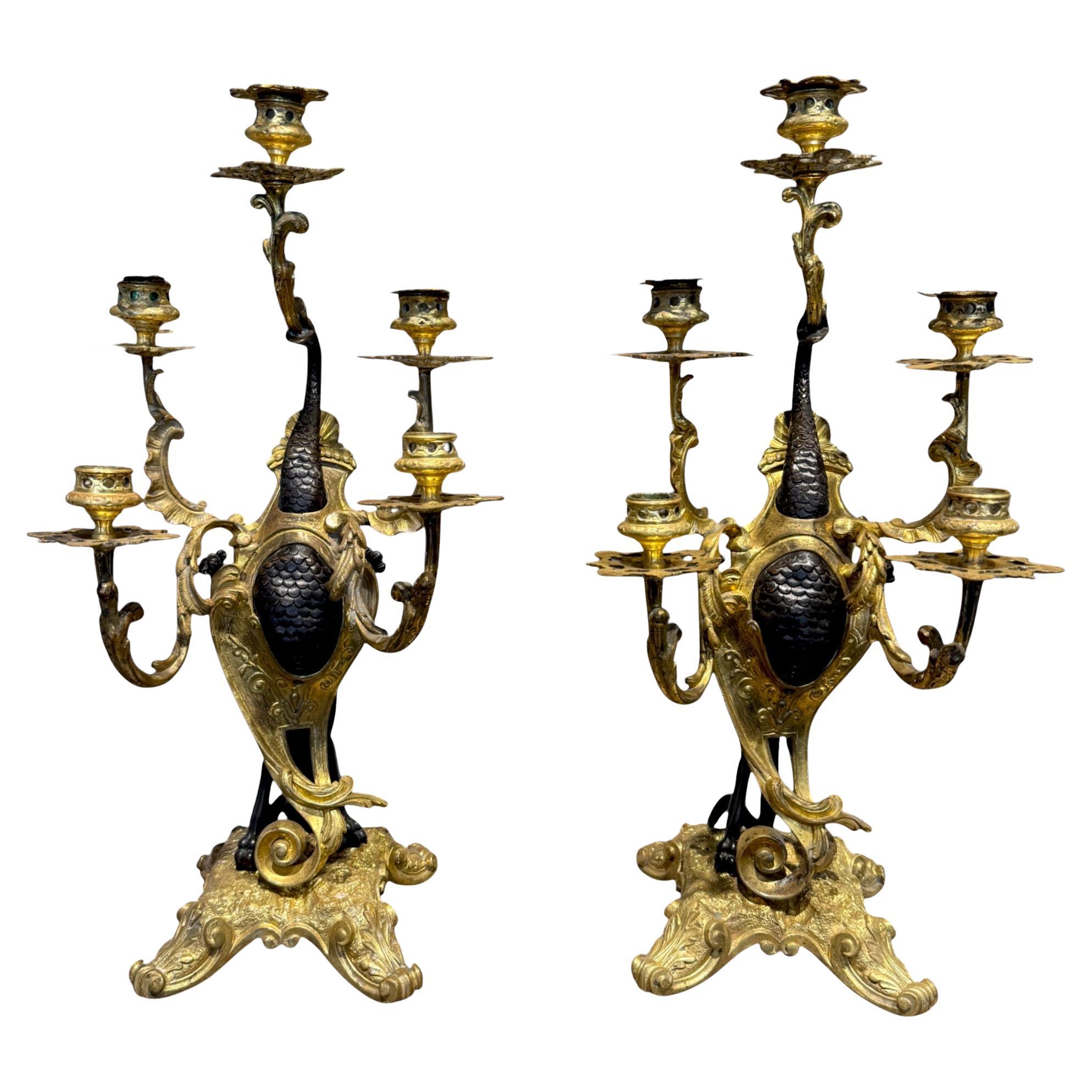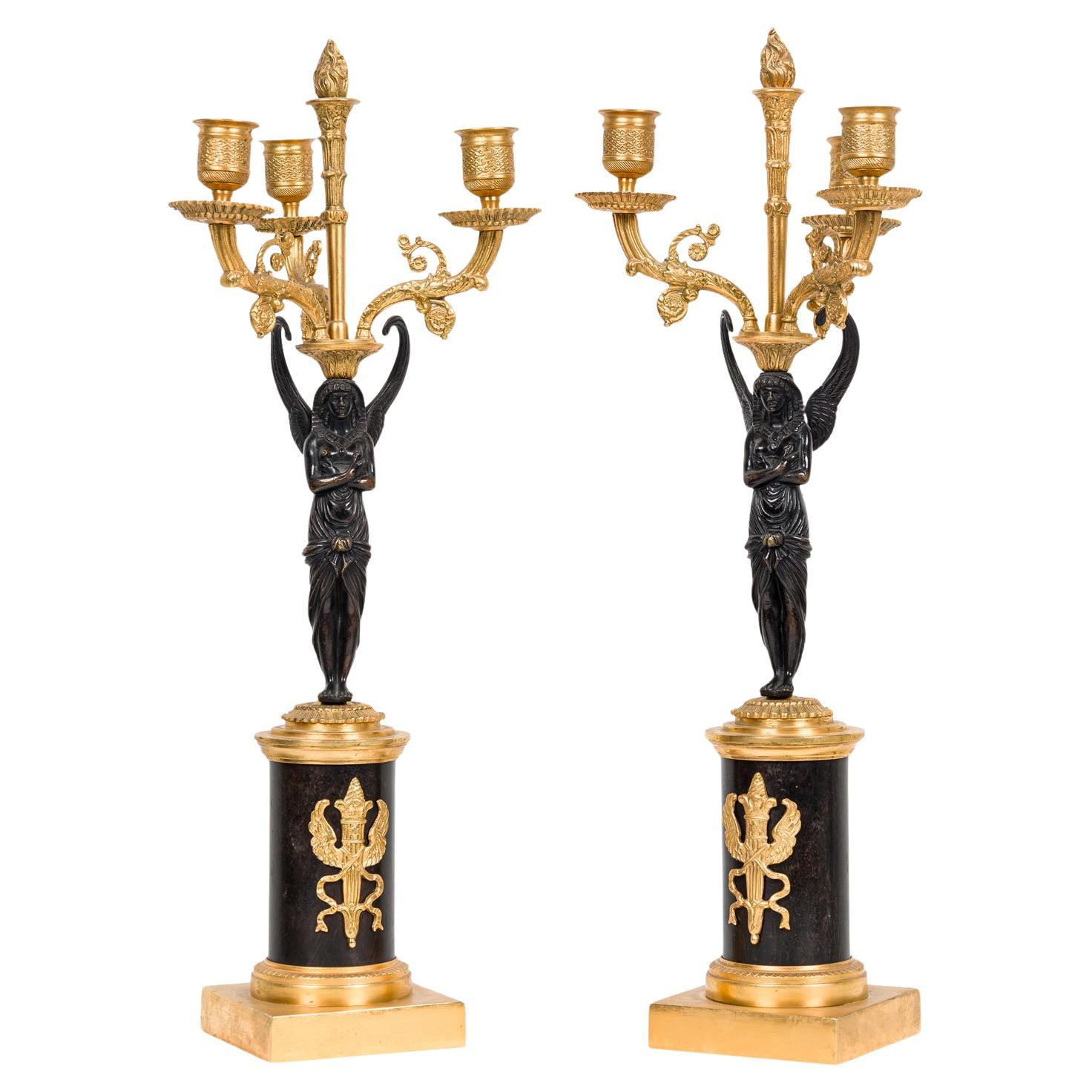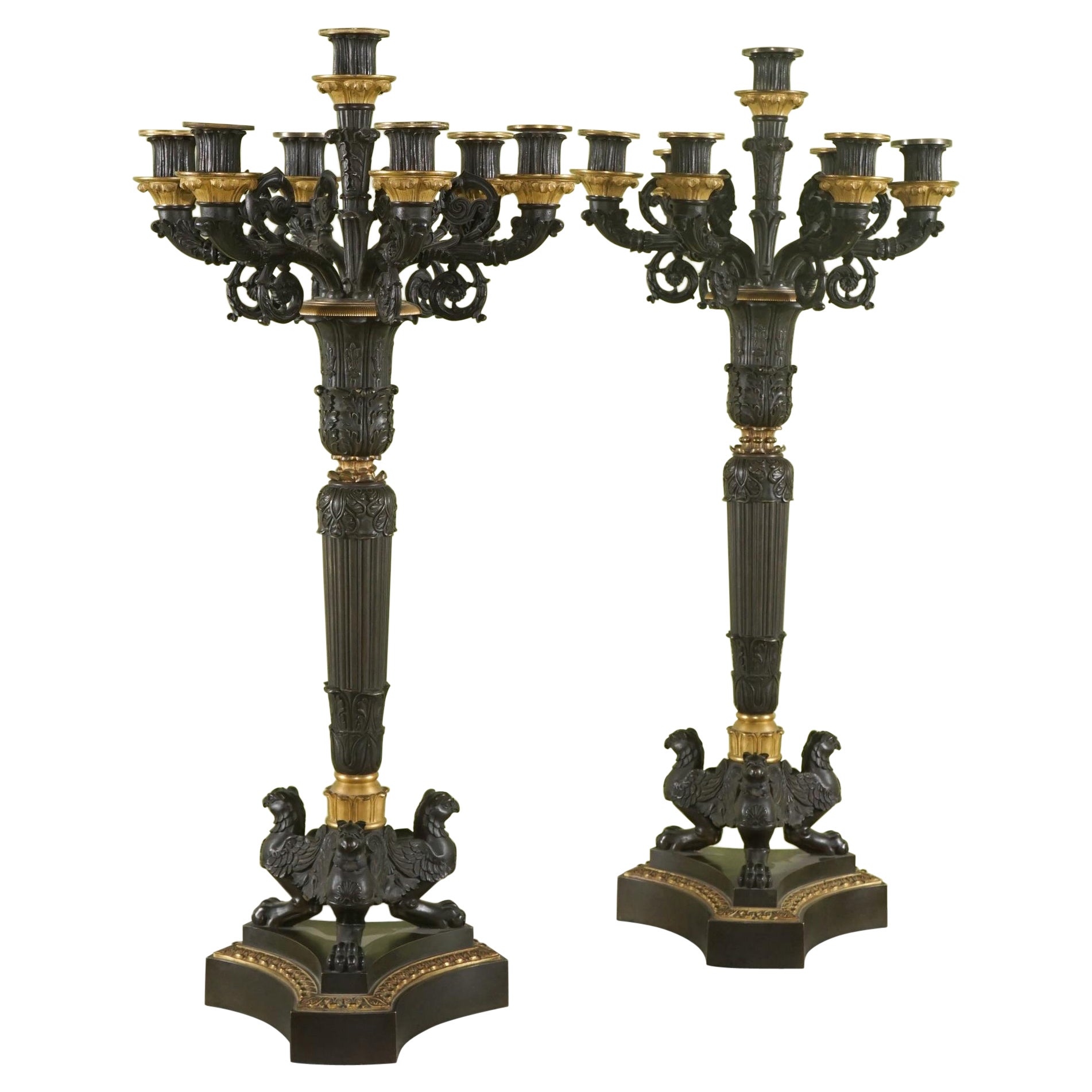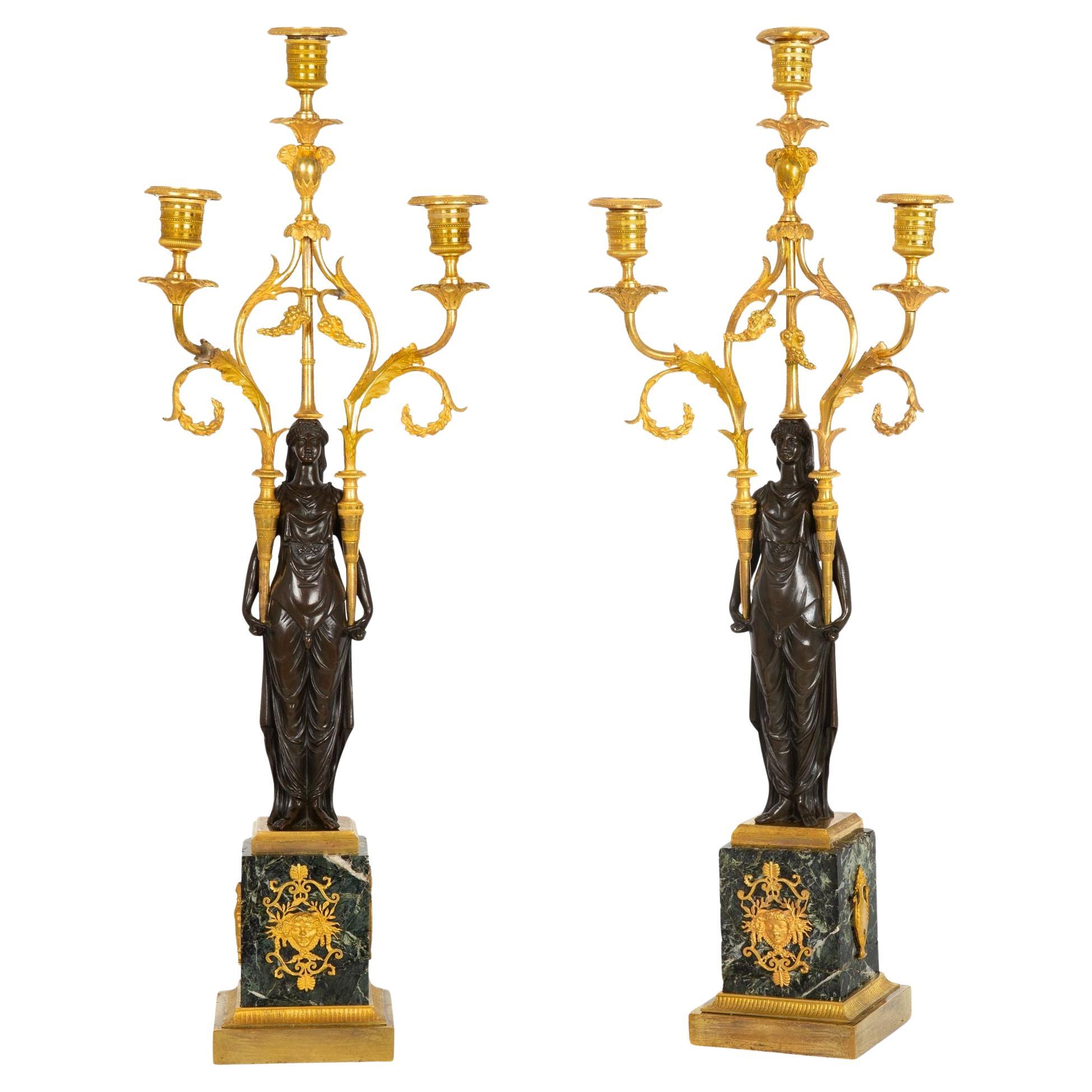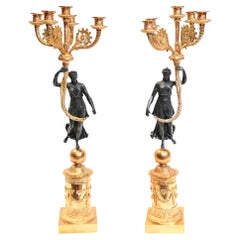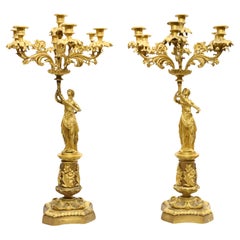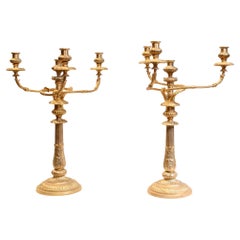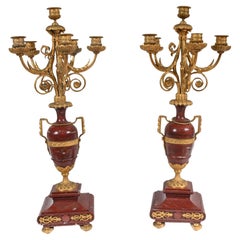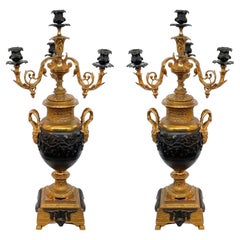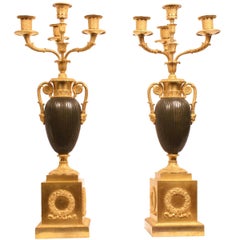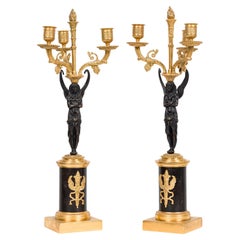Items Similar to Pair English Gilt and Bronze Candelabras Thomas Hope 1880
Video Loading
Want more images or videos?
Request additional images or videos from the seller
1 of 16
Pair English Gilt and Bronze Candelabras Thomas Hope 1880
$2,385.11per set
£1,750per set
€2,051.98per set
CA$3,290.47per set
A$3,659.14per set
CHF 1,921.86per set
MX$44,736.67per set
NOK 23,948.22per set
SEK 22,576.70per set
DKK 15,314.39per set
About the Item
You are viewing a pair of antique gilt and bronze urns in the manner of Thomas Hope
The look is high Regency with a dazzling colour interplay between the black and gilt
They are classic amphora urns - Greek Revival - with various figures in relief
Each piece has six branches to the candelabras
Two feet tall - 60 CM - so good size on these
The casting to the gilt is very detailed and ornate with a great patina
We bought these from a private residence in London's Mayfair Offered in great shape ready for home use right away
We ship to every corner of the planet - please get in touch for a shipping quote
About the Seller
5.0
Gold Seller
Premium sellers maintaining a 4.3+ rating and 24-hour response times
Established in 1966
1stDibs seller since 2021
209 sales on 1stDibs
Typical response time: 8 hours
- ShippingRetrieving quote...Shipping from: Potters Bar, United Kingdom
- Return Policy
Authenticity Guarantee
In the unlikely event there’s an issue with an item’s authenticity, contact us within 1 year for a full refund. DetailsMoney-Back Guarantee
If your item is not as described, is damaged in transit, or does not arrive, contact us within 7 days for a full refund. Details24-Hour Cancellation
You have a 24-hour grace period in which to reconsider your purchase, with no questions asked.Vetted Professional Sellers
Our world-class sellers must adhere to strict standards for service and quality, maintaining the integrity of our listings.Price-Match Guarantee
If you find that a seller listed the same item for a lower price elsewhere, we’ll match it.Trusted Global Delivery
Our best-in-class carrier network provides specialized shipping options worldwide, including custom delivery.More From This Seller
View AllPair French Bronze Candelabras Maiden Regency Classical Gilt
Located in Potters Bar, GB
You are viewing a gorgeous pair of French gilt and bronze candelabras in the Regency manner
Great look to this pair which at just under three feet tall are a good size - 73 CM
The ma...
Category
Vintage 1980s Regency Candelabras
Materials
Bronze
Pair French Ormolu Candelabras Maiden Antique 1880
Located in Potters Bar, GB
Gorgeous pair of French antique candelabras in ormolu
Perfect left and right maidens hold aloft the seven branch candelabras
We date this pai...
Category
Antique 1880s Candelabras
Materials
Bronze
Pair Gilt Candelabras Matthew Boulton Regency Candles
Located in Potters Bar, GB
Absolutely stunning pair of Matthew Boulton style gilt candelabras
Hopefully the photos do this stunning pair some justice, they are simply majestic in the flesh
The details are stun...
Category
Vintage 1980s Candelabras
Materials
Bronze
Pair French Classical Candelabras Marble Urn Gilt 1880
Located in Potters Bar, GB
You are viewing an incredible pair of antique French bronze candelabras
Classical look with the red marble urns of amphora form
We date these to circa 1880
Opulent pair, love the col...
Category
Antique 1880s Candelabras
Materials
Marble
Pair French Gilt Cherub Candelabras Clodion 1880
Located in Potters Bar, GB
Stunning pair of large gilt and marble candelabras in the Clodion manner
Good size at just under three feet tall
So eye catching with the pair of cherubs intertwined holiding aloft t...
Category
Antique 1880s Candelabras
Materials
Bronze
$5,996 / set
Pair French Gilt Candelabras Female Maiden Figural Candles
Located in Potters Bar, GB
You are viewing an eye catching pair of gilt Empire candelabras
Of figural form, the candelabras are held aloft by the toga clad female maidens
A perfect left and right
Stand on the ...
Category
Antique 1890s Empire Candelabras
Materials
Bronze
You May Also Like
Pair of Late 19th Century Napoleon III Gilt & Patinated Bronze Candelabras
Located in Los Angeles, CA
Pair of gilt and patinated bronze four light candelabras in the style of Napoleon III. Made in France, Late 19th Century. Delicately crafted providing a sense of allure to any room.
...
Category
Antique Late 19th Century French Candelabras
Materials
Bronze
Pair of French Early 19th Century Gilt Bronze Candelabra
Located in New York, NY
A pair of French gilt bronze and patinated bronze four-light candelabra.
France, early 19th century.
Measures: H 22 in.
Category
Antique Early 19th Century French Empire Candelabras
Materials
Bronze
Pair of Bronze and Gilt Candelabra, France, 19th Century
Located in NICE, FR
This pair of 19th-century French candelabra is made from dark patinated bronze and bright gilt bronze (ormolu). Each piece features a mythical creature, possibly a dragon or a chimer...
Category
Antique Late 19th Century French Napoleon III Candelabras
Materials
Bronze
Pair of French Empire Gilt Bronze and Ormalu Candelabras
Located in Queens, NY
Pair of French Empire-style (20th century) gilt and patinated bronze 3 light candelabra with winged figural columns and flame finial on ormolu mounted base. (Priced as pair).
Category
20th Century Victorian Candelabras
Materials
Bronze
Pair of Empire Style Patinated and Gilded Bronze Candelabra
Located in Hudson, NY
This impressive pair of candelabra made in the era of Napoleon III in France circa 1870 are very powerful and impressive. Heavily cast with references to the classical past and profu...
Category
Antique 1870s Empire Candelabras
Materials
Bronze
Pair of French Empire Gilt Patinated Bronze Three-Light Candelabra ca. 1815
Located in Shippensburg, PA
PAIR OF EMPIRE GILT AND PATINATED BRONZE THREE-LIGHT CANDELABRA
Paris, France ca. 1815-35 raised on antico verde marble plinths
25 1/2" H x 9" W x 4 1/2" D
A very finely chiseled ...
Category
Antique 19th Century French Empire Candelabras
Materials
Marble, Bronze
More Ways To Browse
Antique English Urns
Thomas Hope
Greek Gold Vase
Gold Amphora
Tall Bronze Vase
Thomas Hope Furniture
Regency Bronze Candelabra
Bronze Amphora
English Regency Vase
Greek Amphora
Regency Thomas Hope
Greek Urn Black
Greek Amphora Vase
Thomas Hope Urns
Cut Glass Urn
Antique Copper Urns
Large Ceramic Urn Vase
Black Urn With Lid
